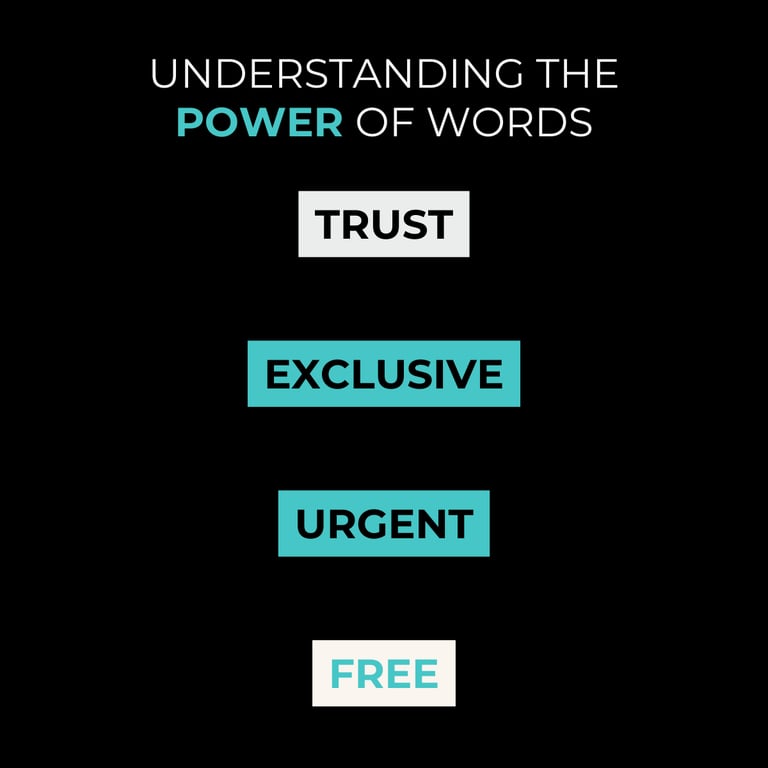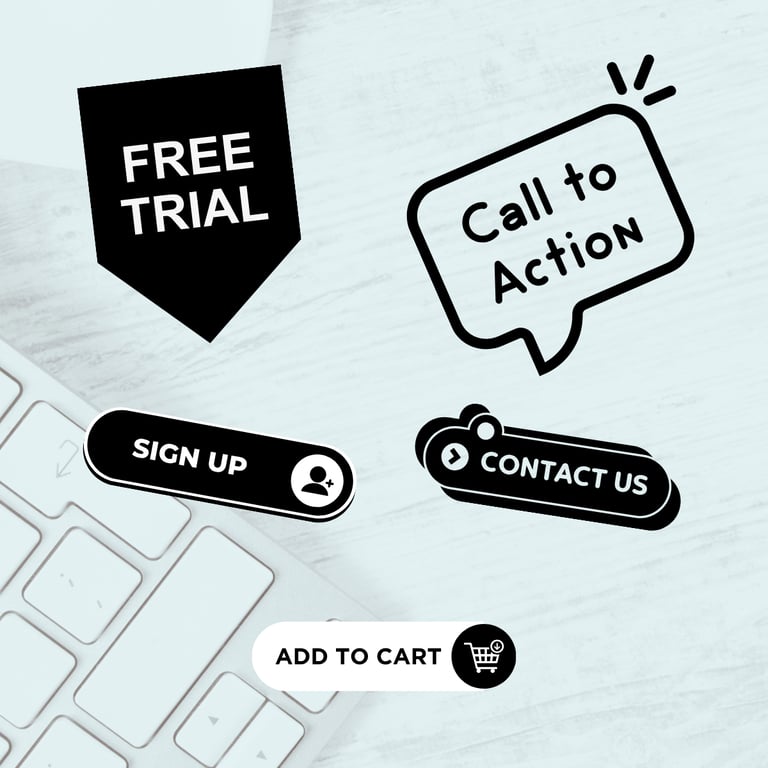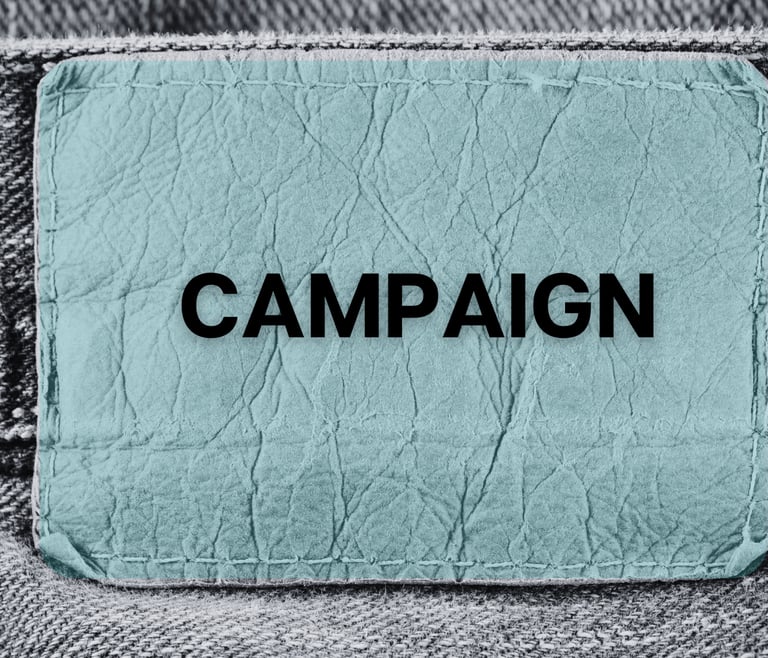The Art of Persuasion in Digital Marketing
This blog dives into the art of persuasion in digital marketing, exploring how psychological triggers like self-image, social proof, and emotional resonance can enhance your marketing strategies. Inspired by Dr. Maxwell Maltz's "Psychocybernetics," we’ll uncover practical tips and real-world examples to help you connect with your audience on a deeper level and drive meaningful engagement.
DIGITAL MARKETINGUSER BEHAVIOURMARKETING STRATEGIESPERSUASION TECHNIQUES

The Art of Persuasion in Digital Marketing
When I first ventured into digital marketing, I was overwhelmed by the sheer amount of information and strategies available. Then I read Dr. Maxwell Maltz's "Psychocybernetics," and it hit me how important persuasion and self-image are in influencing people. This changed how I approached marketing, helping me connect better with audiences. Let's dive into how understanding psychological triggers can boost your digital marketing strategies.
The Psychology Behind Persuasive Language: Understanding Psychological Triggers
Understanding Psychological Triggers
Have you ever wondered why certain words just seem to stick with you? That's the magic of psychology at work! In digital marketing, understanding the psychological triggers behind word choices can make all the difference. Words aren't just a way to convey information—they're powerful tools that can influence how people think, feel, and act. Let’s dive into some fascinating aspects of how our brains respond to language and how these insights can enhance your marketing strategies!
The Framing Effect: How You Say It Matters
Imagine you’re offered a yogurt that’s labelled "90% fat-free." Sounds pretty good, right? But what if the same yogurt was labelled "contains 10% fat"? Suddenly, it doesn’t seem as appealing. This is the framing effect in action. The way information is presented—or "framed"—can significantly impact our decisions. In digital marketing, framing your message positively can lead to better engagement. Highlighting the benefits of a product rather than what it lacks can make a big difference in how it’s received.
Social Proof: Leveraging Human Nature
Humans are inherently social creatures. We look to others to guide our own behavior, especially in uncertain situations. This is known as social proof. Phrases like "Join thousands of satisfied customers" or "As seen on popular media" tap into this psychological trigger. They reassure potential customers that they’re making a safe and popular choice. By showcasing testimonials, reviews, and endorsements, you can leverage social proof to build trust and encourage conversions.
Reciprocity: Give and You Shall Receive
Ever noticed how receiving a small gift makes you feel like you should give something in return? That’s the principle of reciprocity. In marketing, offering something valuable for free—like a downloadable e-book, a free trial, or a useful tip—can make users feel inclined to reciprocate. They might do this by signing up for your newsletter, sharing your content, or even making a purchase. It's a simple yet effective way to build goodwill and encourage positive actions.
Self-Image and Psychocybernetics
In his book "Psychocybernetics," Dr. Maxwell Maltz emphasizes the concept of self-image and its profound impact on human behaviour. According to Maltz, our self-perception influences how we act and react. In marketing, crafting messages that align with and enhance the audience’s self-image can be incredibly persuasive. For example, fitness brands often promote an aspirational self-image, encouraging users to see themselves as healthier and more confident individuals. By tapping into this self-image alignment, you can create more compelling and motivating messages.
The Power of Specific Words: Crafting Effective Messages
"Free": The Ultimate Attention-Grabber
Who doesn’t love free stuff, right? The word "free" is incredibly powerful because it taps into our natural aversion to loss. When something is free, there’s no risk involved, and people are more likely to take action. Whether it’s a free trial, free shipping, or a free bonus, this word can significantly boost your engagement rates.
"Exclusive": Creating a Sense of Belonging
Everyone likes to feel special. The word "exclusive" creates a sense of privilege and belonging. It suggests that the offer is not available to everyone, which makes it more desirable. Using phrases like "exclusive access" or "members-only benefits" can make your audience feel valued and eager to be part of a select group.
"Limited Time": Urgency Drives Action
The phrase "limited time" introduces urgency. It tells people that they need to act quickly or they’ll miss out. This sense of urgency can prompt faster decisions and increase conversion rates. Whether it’s a flash sale, a countdown timer, or a limited-time offer, creating a sense of urgency can be a powerful motivator.
Self-Concept and Persuasive Words
Dr. Maltz’s insights from "Psychocybernetics" also highlight how our self-concept can be influenced by the words we encounter. Words that affirm and enhance a positive self-concept can be particularly persuasive. For instance, marketing campaigns that use affirming language such as "You deserve the best" or "Achieve your potential" can reinforce positive self-perceptions and motivate action. Crafting your messages to boost the audience’s self-concept can lead to higher engagement and loyalty.
Practical Examples of Persuasive Language: Real-World Success Stories
Nike: Just Do It
Nike’s slogan, "Just Do It," is a classic example of persuasive language. It’s simple, direct, and powerful. This phrase taps into the desire for action and achievement. It encourages people to push their limits and take on new challenges. The emotional resonance of this slogan has made it one of the most successful in marketing history.
Apple: Think Different
Apple’s "Think Different" campaign used persuasive language to position the brand as innovative and unique. This phrase appealed to people’s desire to stand out and be seen as creative individuals. By challenging the status quo, Apple attracted a loyal following of customers who wanted to be part of something special.
Coca-Cola: Share a Coke
Coca-Cola’s "Share a Coke" campaign used personalisation to create emotional connections. By replacing its logo with popular names, Coca-Cola made its products feel personal and relevant. The simple act of seeing your name on a Coke bottle created a sense of excitement and belonging. This clever use of language led to a significant increase in sales and social media engagement.
Dove: Real Beauty
Dove’s "Real Beauty" campaign challenged traditional beauty standards and celebrated diversity. This bold approach used persuasive language to promote self-acceptance and confidence. By featuring real women of various shapes, sizes, and ages, Dove resonated with a broad audience. Authentic stories of women embracing their natural beauty encouraged others to do the same, creating a powerful and positive impact.
Applying Persuasive Language in Your Marketing: Tips and Techniques
Know Your Audience
Understanding your audience is key to choosing the right words. What are their needs, desires, and pain points? Tailor your language to resonate with their specific motivations and preferences. This personal connection can make your messages more compelling and effective.
Test and Refine Your Messages
Not every word or phrase will work for every audience. That’s why it’s important to test and refine your messages. Use A/B testing to compare different versions of your content and see which one performs better. This iterative process will help you discover what resonates most with your audience and optimise your campaigns accordingly.
Be Authentic
While it’s important to use persuasive language, it’s equally important to be authentic! Overly hyped or misleading messages can erode trust and damage your brand’s reputation. Be honest and transparent in your communication, and ensure that your promises align with what you deliver.
Leverage Positive Self-Image
Incorporate insights from "Psychocybernetics" by leveraging positive self-image in your messaging. Craft statements that affirm the user’s self-worth and potential. This can create a deeper emotional connection and encourage positive engagement with your brand.
Clarity is Key
Your call to action (CTA) should be crystal clear. Users should immediately understand what will happen when they click on it. Avoid vague language and be direct. Instead of saying "Click Here," specify the action with phrases like "Download Your Free Guide" or "Get Started Today." Clarity reduces hesitation and increases the likelihood of action.
Create a Sense of Urgency
Urgency is a powerful motivator. When people feel they might miss out on something valuable, they're more likely to act quickly. Use time-sensitive language in your CTAs to create urgency. Phrases like "Limited Time Offer," "Only a Few Spots Left," or "Act Now" can prompt users to take immediate action. Just be sure to deliver on your promises to maintain trust.
Highlight the Benefits
A great CTA clearly communicates the benefits of taking action. Why should users click on your button? What’s in it for them? Highlight the value they will receive. For example, instead of "Sign Up," try "Join Our Community for Exclusive Tips." Emphasising benefits helps users understand the value of their action and increases their motivation.
Real-World Examples of Effective CTAs: Zoom, Hulu, and Amazon
Zoom: "Sign Up, It's Free"
Zoom uses the phrase "Sign Up, It's Free" as a compelling CTA. This phrase is clear, action-oriented, and lowers the barrier to entry by emphasising that there's no cost involved. By highlighting the free sign-up, Zoom attracts users who might be hesitant to commit financially right away. This approach helps in rapidly increasing their user base, especially during the early stages of the COVID-19 pandemic when remote communication became crucial.
Hulu: "Start Your Free Trial"
Hulu offers a 30-day free trial with the CTA "Start Your Free Trial." This phrase is enticing as it invites users to explore the platform without any financial commitment. By providing a significant trial period, Hulu allows potential subscribers to fully experience its range of content, including popular shows and exclusive originals, thereby increasing the likelihood of conversion to paying customers!
Amazon: "Add to Cart"
Amazon’s "Add to Cart" button is a simple yet powerful CTA. It’s clear and action-oriented, making it easy for users to understand the next step in their purchase journey. This straightforward approach helps reduce friction in the buying process, leading to higher conversion rates.
CONCLUSION
Mastering the art of persuasion in digital marketing involves understanding psychological triggers like the framing effect, social proof, and reciprocity. These elements help craft compelling messages that resonate with audiences. Specific words such as "free," "exclusive," and "limited time" can capture attention, create urgency, and foster a sense of belonging. Real-world examples from brands like Nike, Apple, Coca-Cola, and Dove demonstrate how strategic word choices and storytelling can drive significant engagement and loyalty.
To apply these insights, focus on knowing your audience, testing and refining your messages, and maintaining authenticity. Effective calls to action (CTAs) from companies like Zoom, Hulu, and Amazon highlight benefits, create urgency, and simplify the user journey, leading to higher conversions. Incorporating insights from "Psychocybernetics" on positive self-image can further enhance your marketing strategies. By continuously optimising your approach, you can elevate your digital marketing efforts and achieve significant success.
Ready to transform your digital marketing strategy with the power of persuasive language? Subscribe to our newsletter for more expert insights, tips, and real-world examples that will help you master the art of persuasion and drive your business success!







